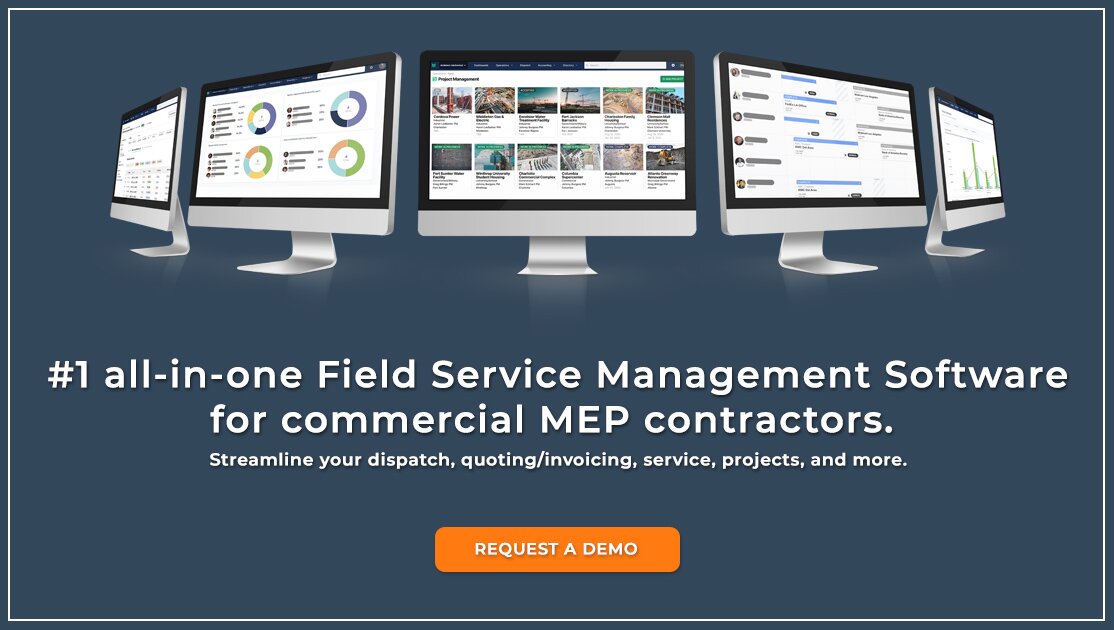Roofing software is a type of specialized software designed to help roofers manage their businesses more efficiently. It typically includes features such as job costing, scheduling, customer management, and accounting tools. The goal of roofing software is to streamline the process for roofers so they can focus on providing quality work and building relationships with clients without getting bogged down in paperwork and administrative tasks. Roofing software also helps protect roofers from potential legal risk by ensuring all documents are properly signed, contracts are kept up-to-date, and safety regulations are followed. In addition to helping with day-to-day operations, some types of roofing software also provide additional services such as marketing solutions or project planning assistance. Whether you’re a single roofer or part of a larger team, roofing software can simplify and enhance your business. With the right software in place, you’ll be able to work smarter, faster, and with greater accuracy, improving customer satisfaction and increasing your bottom line.
By choosing the right roofing software for your business, you’ll have the tools and resources you need to run a successful and profitable operation. With features such as job scheduling, invoicing, customer management, accounting, reporting, marketing solutions, and more available at your fingertips, you can totally streamline your business processes and ensure that each job is completed smoothly and efficiently. Roofing software allows you to keep track of all aspects of your business from start to finish in one convenient place so you don’t have to worry about juggling multiple projects or losing important documents.
It’s an essential tool for any roofer looking to make their business more efficient and take it to the next level. Start exploring software options today and get ready to experience the difference that roofing software can make in your business.
What are the key features of Roofing Software?
The key features of roofing software typically include job costing and scheduling, customer management, accounting tools, document storage, safety compliance tracking, marketing solutions, and project design/planning assistance. Job costing helps you track the cost of each job to ensure it’s completed within budget. Scheduling allows you to easily manage appointments with customers. Customer management helps you keep in contact with clients and quickly access information about their projects. Accounting tools help you track your finances and stay on top of invoicing and payments. Document storage simplifies paperwork filing while providing easy access to important documents whenever needed. Safety compliance tracking ensures that all safety regulations are followed throughout each step of a project. Finally, some roofing software also offers additional services such as marketing solutions and project design/planning assistance to help you stay ahead of the competition.
What are the benefits of Roofing Software?
The primary benefit of roofing software is that it streamlines many of the administrative and paperwork tasks associated with running a business, allowing you to spend more time on customer service and quality work. Additionally, having all documents properly stored and signed helps protect your business from potential legal risks. Roofing software also improves accuracy in job costing, scheduling, invoicing, payments, and other financial processes which leads to better overall efficiency. Finally, some types of roofing software can provide additional services such as marketing solutions or project design/planning assistance which can help you stay competitive in today’s market. Ultimately, roofing software helps you manage your business more efficiently and effectively, allowing you to focus on customer relationships and quality work while increasing your bottom line.
What are the challenges associated with Roofing Software?
The primary challenge associated with roofing software is learning how to use it correctly. Since these types of software are specifically designed for roofers, they can be complicated and require a certain level of technical knowledge to operate effectively. Additionally, some features such as accounting tools may require additional training or experience. Finally, if you’re upgrading from an older system, there will likely be a period of transition where you have to learn the new system before being able to take full advantage of its capabilities. While these challenges can seem daunting at first, once you invest the time and energy into learning the software and understanding its features, you can benefit from improved efficiency and accuracy which leads to better customer satisfaction and increased profits.
What should organizations consider when implementing Roofing Software?
When implementing roofing software, organizations should consider the overall cost of the software, both upfront and in the long term. Additionally, they should evaluate their current processes to determine what type of software is best suited for their particular business needs. It’s also important to make sure that any necessary staff has been trained on how to use the software effectively. Finally, organizations should ensure that customer data remains safe and secure by evaluating available security features before investing in a specific software solution. By taking these considerations into account, organizations can be confident that they’re choosing the right roofing software for their business needs.
What are the different types of Roofing Software?
There are several different types of roofing software available, each with its own unique features and benefits. Some software is designed to streamline administrative tasks such as payroll and invoicing. Other software offers safety compliance tracking to ensure all safety regulations are met. Accounting tools provide the ability to track finances and stay on top of payments. Document storage simplifies paperwork filing while providing easy access to important documents when needed. Finally, some software also offers additional services such as marketing solutions or project design/planning assistance for added convenience. By understanding the differences between the various types of roofing software, organizations can make an informed decision about which one best meets their business needs.
What are the different licensing options for Roofing Software?
Roofing software typically comes with several different licensing options, allowing organizations to choose the one that best meets their needs. Options range from perpetual licenses which are typically more expensive upfront but require no additional payments, to subscription-based models where customers pay an ongoing fee for access to the software and its features. Additionally, there may be platform-specific licenses available depending on the type of device you’re using (e.g., desktop vs mobile). Finally, larger organizations may have the option of customizing their license agreement in order to get all the features they need at a cost that fits within their budget. By understanding the various licensing options available for roofing software, organizations can ensure they’re getting the most bang for their buck.
Are there any restrictions or compliance requirements when using Roofing Software?
Yes, depending on the type of roofing software you’re using, there may be certain restrictions or compliance requirements that must be followed in order to use the software. For example, if your software includes safety tracking features, your organization may need to adhere to specific safety regulations and standards in order to remain compliant. Additionally, many roofing software solutions require customers to maintain up-to-date backups of all their data so that it can be restored in case of an emergency. Finally, some types of roofing software may also have licensing restrictions regarding how they are used or transferred between users. By understanding these compliance requirements ahead of time and following them closely, organizations can ensure they’re taking full advantage of their business by using roofing software.
Are there any alternatives to Roofing Software?
Many organizations may be hesitant to make a large investment in roofing software, or they may need specialized features that are not currently offered by existing products. In those cases, there are several alternatives that can help streamline the roofing process. For example, some companies offer mobile applications for roofers that allow them to track their progress and customers’ information while on the job site. Additionally, cloud-based services such as project management tools provide an easy way to manage projects without having to purchase or install any additional software. Finally, paper-based systems and manual processes remain popular among many smaller contractors who prefer direct control over their workflow without the need for technology or additional investments. By understanding all the available options, organizations can find the right solution that meets their unique needs.
What are the best practices for using Roofing Software?
Using roofing software effectively requires the implementation of best practices to ensure a successful workflow. Organizations should start by familiarizing themselves with the software’s features, taking time to read user manuals and watch tutorials so they can understand how to maximize their use of it. Additionally, they should investigate any existing integrations that may be offered in order to link the software with other business processes such as accounting or customer relationship management (CRM). Finally, organizations should consider implementing security measures and backups in order to protect their data and keep it safe from unauthorized access. By following these best practices, organizations can ensure they get the most out of their chosen roofing software solution.
What resources are available to help organizations with their implementation of Roofing Software?
There are a variety of resources available to help organizations with their implementation of roofing software. Many software vendors offer support services such as tutorials and user guides, while larger companies may even provide onsite consultation or training sessions. Additionally, many third-party providers offer to consult services to help organizations understand the features and benefits of their chosen software. Finally, there are plenty of online discussion forums and blogs dedicated to the use of roofing software where users can discuss tips, tricks, and best practices for successful implementations. By taking advantage of these resources, organizations can ensure that they have all the information they need to get up and running quickly and easily with their new roofing software solution.
What is the future or trends for Roofing Software?
One of the most exciting trends for roofing software is the emergence of artificial intelligence (AI). AI-powered tools can help automate many processes, such as estimating jobs and scheduling crews, which can lead to significant time savings. Additionally, cloud computing has made it much easier for organizations to access data stored in other systems or on different devices. This allows them to make more informed decisions by quickly analyzing large amounts of data simultaneously. Finally, trend analysis can provide valuable insights into job performance over time, allowing businesses to identify areas where they could be more efficient or cost-effective. By taking advantage of these technological advances, organizations can ensure they stay ahead of their competition when it comes to managing their roofing business.
What are people saying about the use of Roofing Software?
Many people who have used roofing software report that it has significantly increased their efficiency, allowing them to complete more jobs in less time. Additionally, they often highlight the ability of certain programs to integrate with other business systems, such as customer relationship management (CRM) and accounting, which can save a lot of manual data entry effort. Furthermore, some users are quick to point out how cloud-based solutions can provide easy access to important data from any location. In general, these reviews demonstrate that when implemented correctly, roofing software can be an invaluable asset for contractors and professionals looking to streamline their workflow.



